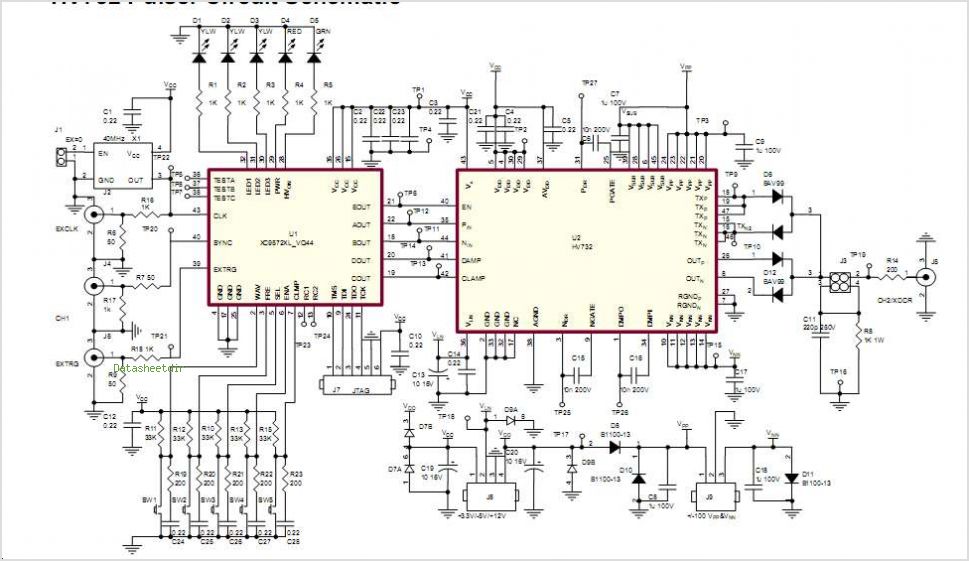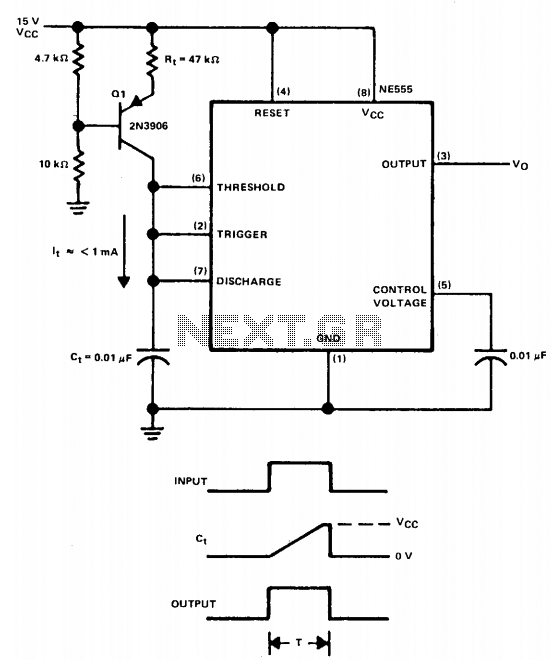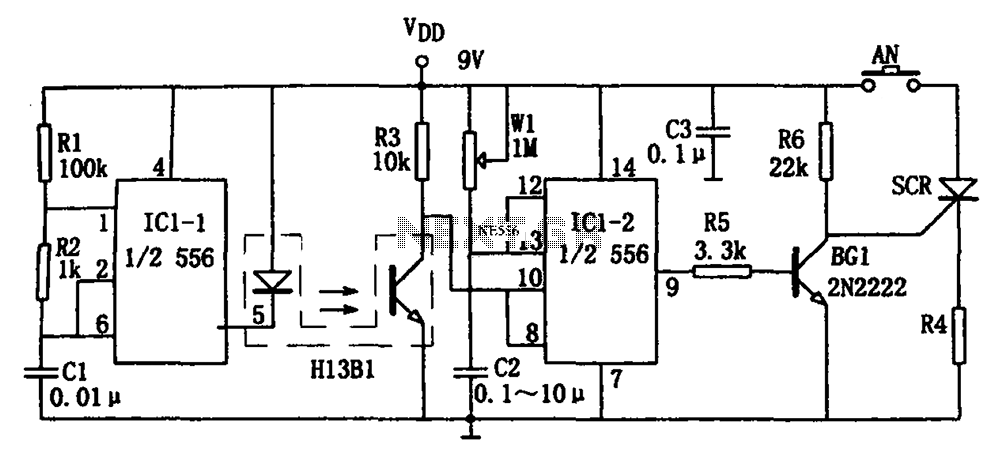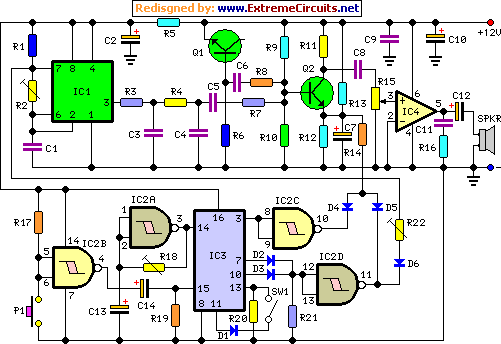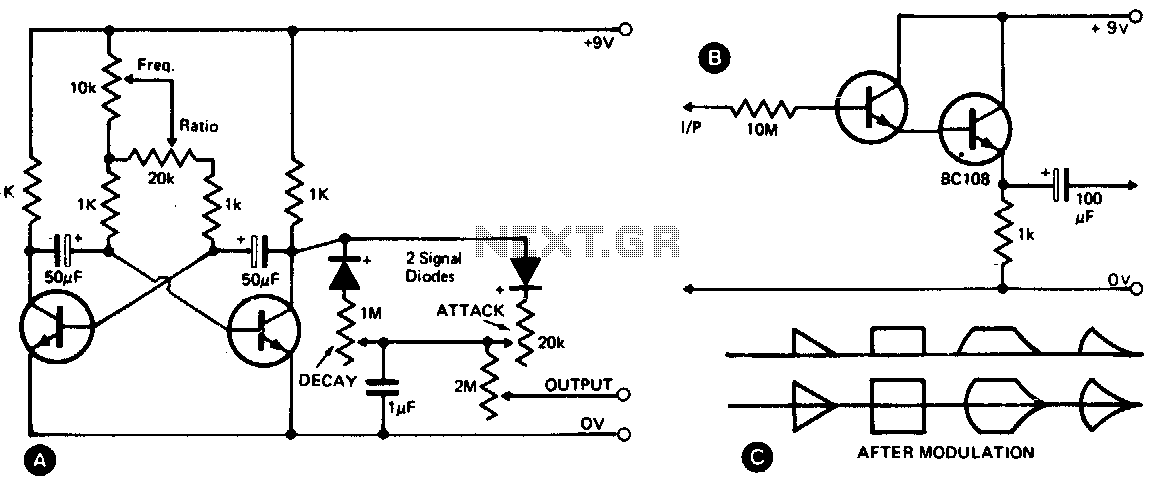
Pulse Generator Produces 3-Phase Output
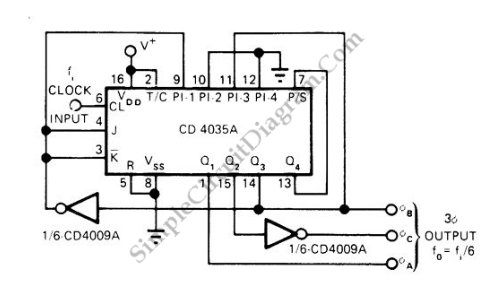
This is a schematic diagram of a three-phase pulse generator circuit. This circuit produces a three-phase overlapped output similar to a three-phase AC power line.
The three-phase pulse generator circuit is designed to create three-phase output signals that are phase-shifted by 120 degrees, resembling the characteristics of a standard three-phase AC power supply. The circuit typically consists of several key components, including oscillators, flip-flops, and output drivers, which work together to generate the desired waveforms.
At the core of the circuit, a stable clock signal is generated using an oscillator, such as a 555 timer or a microcontroller. This clock signal serves as the timing reference for the entire circuit. The oscillator output is fed into a series of logic gates or flip-flops, which are configured to produce the three-phase signals. Each output from these components is delayed appropriately to achieve the necessary phase shifts.
The output stage of the circuit often includes power transistors or MOSFETs that amplify the pulse signals to the required voltage and current levels for driving loads. The use of these components ensures that the circuit can effectively manage the power requirements of connected devices, such as motors or transformers, which typically operate on three-phase AC power.
To enhance the performance and stability of the circuit, filtering components may be incorporated at the output stage. These may include inductors and capacitors that help to smooth out the pulse signals, reducing harmonics and providing a cleaner output waveform. Additionally, protective components such as diodes may be included to safeguard against voltage spikes and ensure the longevity of the circuit.
This three-phase pulse generator circuit finds applications in various fields, including industrial automation, motor control systems, and renewable energy systems, where three-phase power is essential for efficient operation.This is a schematic diagram of a three-phase pulse generator circuit. This circuit produce 3 phase overlapped output similar with 3 phase AC powerline, you.. 🔗 External reference
The three-phase pulse generator circuit is designed to create three-phase output signals that are phase-shifted by 120 degrees, resembling the characteristics of a standard three-phase AC power supply. The circuit typically consists of several key components, including oscillators, flip-flops, and output drivers, which work together to generate the desired waveforms.
At the core of the circuit, a stable clock signal is generated using an oscillator, such as a 555 timer or a microcontroller. This clock signal serves as the timing reference for the entire circuit. The oscillator output is fed into a series of logic gates or flip-flops, which are configured to produce the three-phase signals. Each output from these components is delayed appropriately to achieve the necessary phase shifts.
The output stage of the circuit often includes power transistors or MOSFETs that amplify the pulse signals to the required voltage and current levels for driving loads. The use of these components ensures that the circuit can effectively manage the power requirements of connected devices, such as motors or transformers, which typically operate on three-phase AC power.
To enhance the performance and stability of the circuit, filtering components may be incorporated at the output stage. These may include inductors and capacitors that help to smooth out the pulse signals, reducing harmonics and providing a cleaner output waveform. Additionally, protective components such as diodes may be included to safeguard against voltage spikes and ensure the longevity of the circuit.
This three-phase pulse generator circuit finds applications in various fields, including industrial automation, motor control systems, and renewable energy systems, where three-phase power is essential for efficient operation.This is a schematic diagram of a three-phase pulse generator circuit. This circuit produce 3 phase overlapped output similar with 3 phase AC powerline, you.. 🔗 External reference
